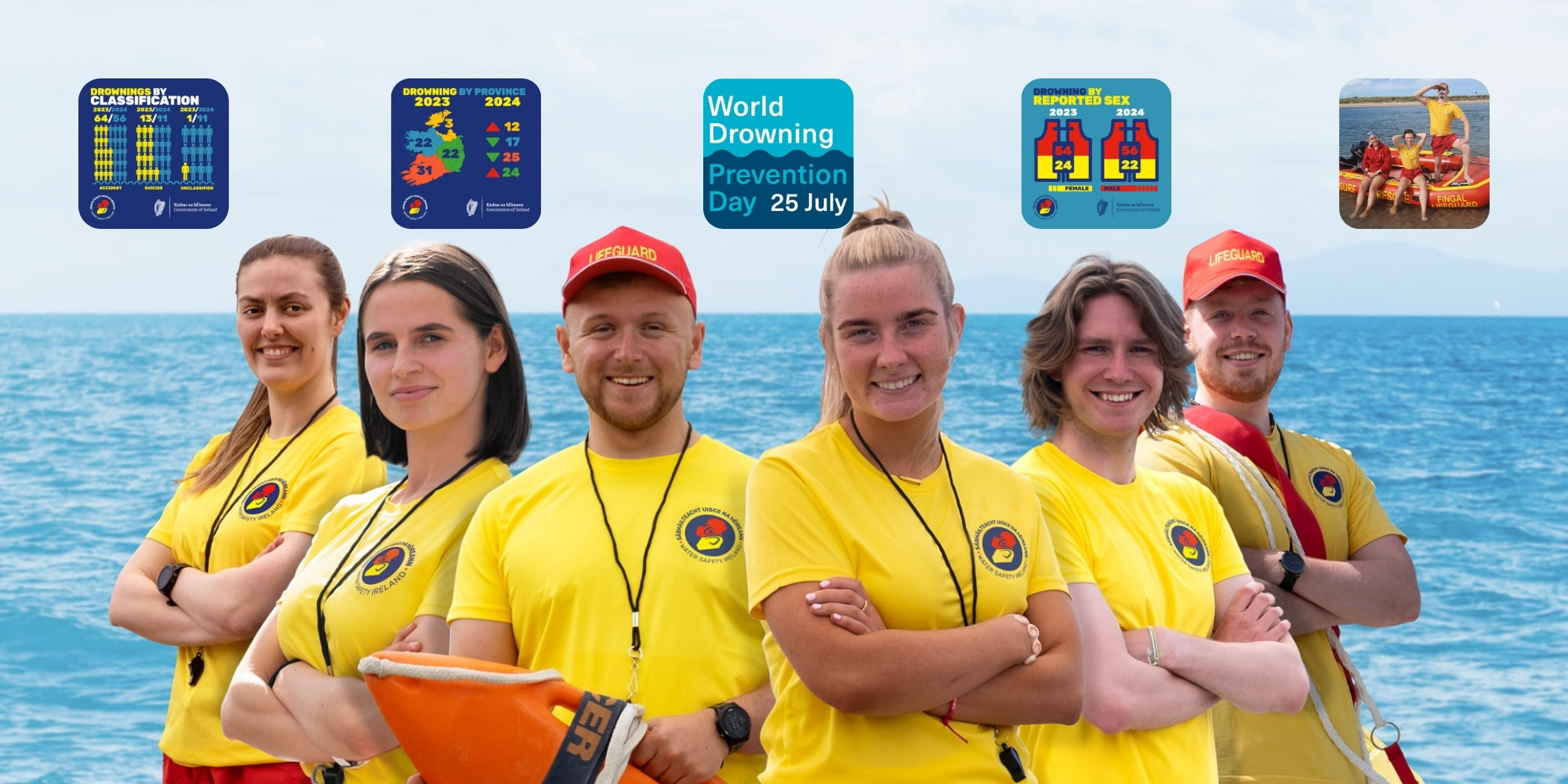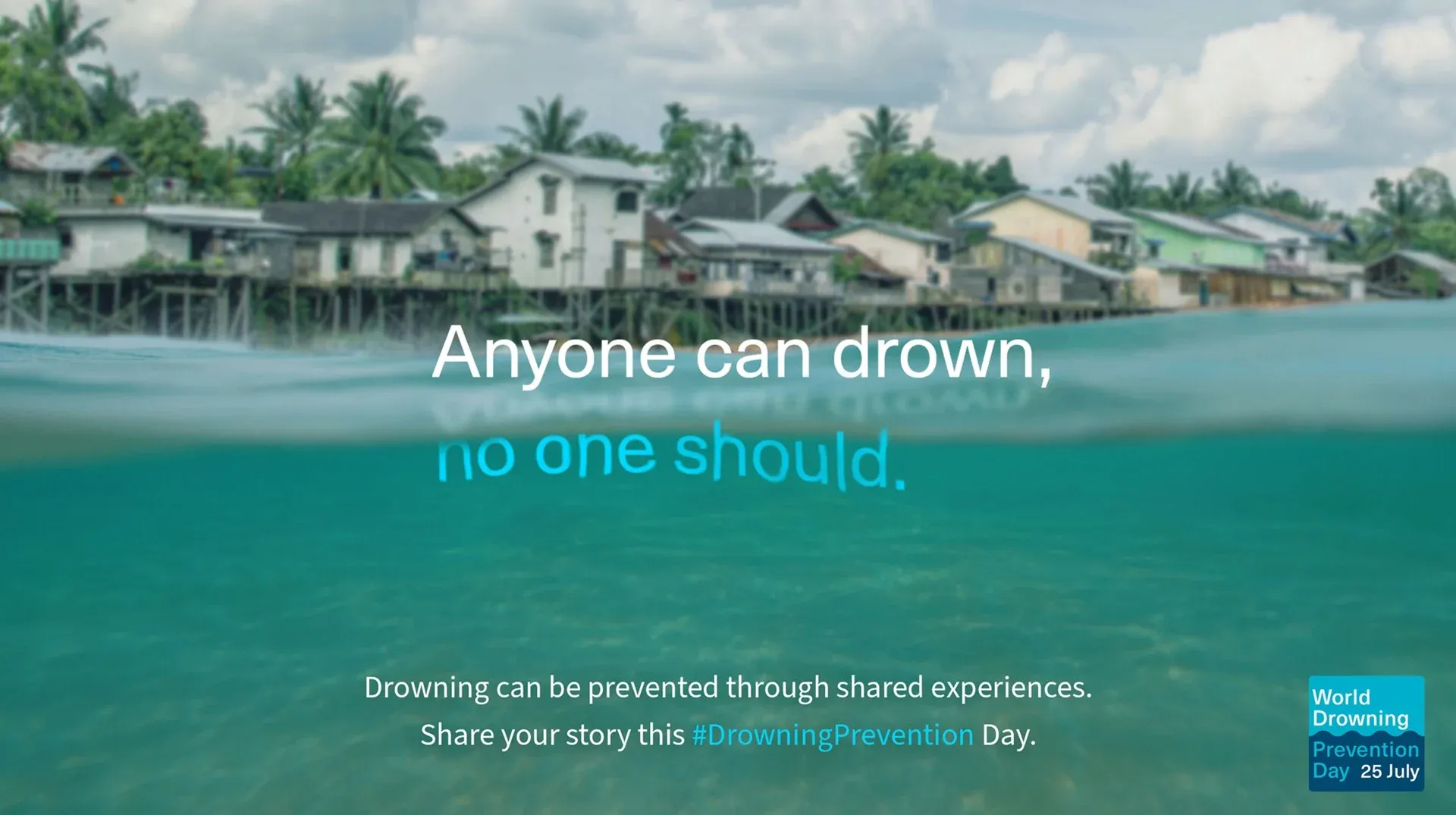World Drowning Prevention Day: One Life Lost Is Still One Too Many
Ireland's drowning deaths down 33% but every life matters. Learn to swim, supervise children, respect water conditions. Together we can prevent tragedy.

Every 25th July, the global community unites to recognise World Drowning Prevention Day, a sobering reminder that drowning claims over 236,000 lives annually worldwide. Established through a UN General Assembly Resolution in April 2021, this day highlights both the tragic impact of drowning on families and communities, and the life-saving solutions available to prevent these preventable tragedies.
Irish Progress Offers Hope Amidst Global Crisis
Ireland has made significant strides in drowning prevention, with provisional data showing encouraging progress. The average number of drownings in 2023 and 2024 was 78 per year, compared to 116 per year between 2018 and 2022 - representing a remarkable 33% decrease in average annual drownings.
However, as Water Safety Ireland emphasises: "one life lost is still one too many." The organisation's latest figures reveal that 48 people have drowned in Ireland so far this year, with Cork leading the grim statistics at 19 drownings, followed by Dublin and Donegal at 18 each.
President Higgins Calls for Greater Water Safety Awareness
President Michael D. Higgins has issued a powerful message for World Drowning Prevention Day, stating:
"Drowning is a preventable tragedy. By promoting water safety awareness - such as learning basic swimming and rescue skills, knowing how to float and what to do in an emergency, always wearing a properly fitted lifejacket when boating or participating in water sports, never leaving children unattended near water, understanding local water conditions, including currents and tides, and respecting warning signs - we can reduce these numbers."
The President's message underscores the collective responsibility we all share: "As we observe this year's World Drowning Prevention Day, let us commit to making water safety a priority in our communities."
Heroes on the Frontline: Stories of Dedication and Survival
Behind the statistics are real people whose stories illuminate both the dangers and the solutions. Declan, a Donegal native now living in Galway, exemplifies community dedication through his work with Claddagh Watch. After hearing a call for volunteers on Galway Bay FM in May 2020, he joined this vital organisation that prevents accidental death and suicide around Galway's waterways.
Declan, Claddagh Watch Volunteer: "You'll never be on your own - comprehensive training and ongoing guidance are always provided to help you handle any situation with confidence. It's a truly rewarding experience, even on the coldest winter nights."
For Miriam, a 24-year veteran of daily sea swimming at Blackrock, the water provides both medicine and community. Diagnosed with rheumatoid arthritis two decades ago, she found that swimming offered relief from inflammation whilst building lasting friendships.
Miriam, Daily Sea Swimmer:
"There are days that every swimmer needs to walk away because it's too powerful or rough to risk. People have gone down the steps of the tower for many decades with the weight of the world on their shoulders and returned lighter."
The Critical Role of Lifeguards and Training
Irish lifeguards, stationed at selected beaches on weekends during June and full-time throughout July and August, represent the first line of defence against drowning incidents. Their expertise extends far beyond rescue operations to prevention through education and immediate intervention.
Rachel Connolly, County Louth Lifeguard:
"In a single day, we located eight lost children. Three of them had gone missing at the same time." Her experience highlights the crucial importance of constant supervision around water, especially for young children who can drown in just a few inches of water.
Conall Boyle, County Cork Lifeguard:
"A girl I taught in our summer water safety classes used her skills to safely rescue four people. She was just 15 at the time." This remarkable example demonstrates how water safety education creates a ripple effect of protection throughout communities.
Understanding Water Dangers: From Coastal to Inland Waters
Different water environments present unique challenges that require specific knowledge and precautions. Lucy Cleere, County Kilkenny Lifeguard observes:
"I see so many people jumping into rivers and lakes without thinking. You have to check the depth and be aware of hidden dangers."
Fresh water environments pose particular risks due to poor visibility, submerged objects, and the potential for sudden depth changes. Unlike seawater, fresh water is less buoyant and often significantly colder, increasing the risk of hypothermia.
David Farrelly, County Dublin Lifeguard warns of coastal hazards:
"An incoming tide left nine people stranded on a sandbank. It all happened in 15 minutes." Tidal strandings occur regularly around Ireland's coast when people underestimate how quickly conditions can change.
The Inflatable Menace
One of the most dangerous trends lifeguards encounter is the use of inflatable toys in open water. Jayke Morris, County Mayo Lifeguard recounts:
"A father and son went out on an inflatable paddle board and within minutes they were over a kilometre from shore."
Inflatables have no traction and can be swept away by wind and currents faster than someone can swim after them. They regularly take children out of their depth and, being unstable, make it easy for users to fall into the water unexpectedly.
Essential Water Safety Principles
The fundamental principles of water safety remain constant across all environments:
Always swim at lifeguarded waterways where professional supervision is available. Supervise children constantly - drowning can happen silently and within seconds. Stay within your depth and swim parallel to shore in coastal areas. Never use inflatable toys in open water - they are toys, not safety devices.
For those venturing onto the water in kayaks or paddle boards, proper training is essential. Sarah Donnelly, County Mayo Lifeguard emphasises:
"We see kayaks and paddle boards getting caught in rip currents, changing tides and offshore winds. The right training is essential."
Emergency Response: Act Fast, Act Smart
When someone is in trouble in water, the response protocol is clear: SHOUT - REACH - THROW. Shout to calm and orientate the person in distress. Reach with anything that avoids entering the water yourself - branches, poles, ropes, or clothing. Throw a ringbuoy or any floating object.
Ireland's network of yellow ringbuoy boxes provides crucial emergency equipment at waterways nationwide. However, theft of these life-saving devices remains a persistent problem. As Water Safety Ireland reminds us: "A stolen ringbuoy is a stolen life."
Global Perspective: Urgent Action Required
Worldwide, drowning has claimed over 3 million lives in the past decade, with more than 90% of drowning deaths occurring in rivers, lakes, wells, domestic water storage vessels, and swimming pools in low and middle-income countries. Children and adolescents in rural areas are disproportionately affected.
The World Health Organisation identifies five crucial interventions that countries can implement: installing barriers around water hazards, ensuring lifeguard supervision at public swimming areas, providing rescue and resuscitation training, maintaining effective search and rescue operations, and delivering early weather warnings.
Individual Action: What You Can Do
Personal responsibility forms the cornerstone of drowning prevention. Learning to swim equips individuals with fundamental life skills, whilst proper supervision of children near water cannot be overemphasised. Avoiding alcohol when around water maintains the alertness necessary for safe water activities.
Being aware of surroundings - checking weather and water conditions before swimming or boating - helps prevent dangerous situations from developing. Using safety equipment correctly, particularly lifejackets when boating, can make the crucial difference between life and death.
Building Water-Safe Communities
Ireland's approach to water safety education through programmes like Water Safety Ireland's Summer Weeks Classes demonstrates the power of community-based prevention. These courses, suitable for ages four to 19, foster healthy respect for water whilst teaching essential rescue and survival skills.
Eoin, who grew up on Galway's river, reflects on how attitudes have evolved:
"I think back then some men found safety measures to be emasculating; we are better off now as are the families of those who have seen the happy results of life jackets, epirbs, flares, serviced lifeboats etc."
The Path Forward
As we mark World Drowning Prevention Day 2025, the theme "Your story can save a life" reminds us that shared experiences and knowledge transfer are powerful tools in preventing drowning. Every swimming lesson taught, every safety conversation held, and every piece of rescue equipment properly maintained contributes to safer water environments.
The stories of volunteers like Declan with Claddagh Watch, experienced swimmers like Miriam at Blackrock, and dedicated lifeguards across Ireland demonstrate that water safety is a collective responsibility requiring individual commitment.
Brian's Story of his brother's metaphorical messages sent through connected waterways captures the essence of our relationship with water:
"All rivers lead to the sea and all seas are connected to each other." This interconnectedness extends to our shared responsibility for water safety.
With drowning rates falling but not fast enough, the message is clear: we must do more. Through education, proper supervision, respect for water conditions, and community vigilance, we can continue reducing these preventable tragedies.
Every life saved through better water safety awareness validates the efforts of organisations like Water Safety Ireland, volunteer groups like Claddagh Watch, and dedicated lifeguards who stand watch over our waterways. Their work, combined with individual responsibility and community support, offers hope that fewer families will experience the devastating loss that drowning brings.



